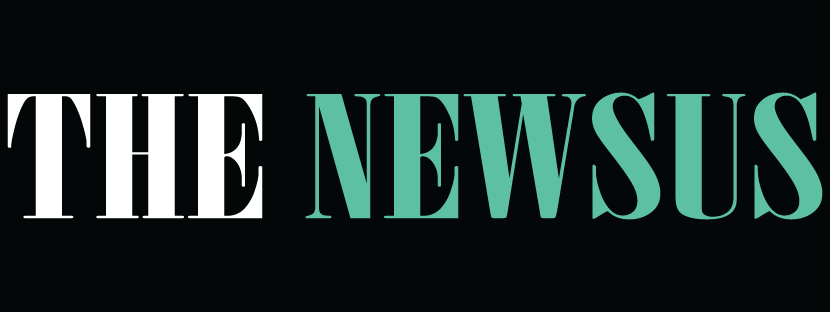How to Build a Strong Talent Portfolio for Career Growth
In today’s professional world, success is no longer solely determined by academic qualifications or years of experience. Instead, employers increasingly...

In today’s professional world, success is no longer solely determined by academic qualifications or years of experience. Instead, employers increasingly value individuals who demonstrate versatility, innovation, and the ability to adapt quickly. This shift has made the concept of a talent portfolio essential for career development. A strong talent portfolio showcases your skills, accomplishments, professional philosophy, and personal brand. It serves as a dynamic tool that proves what you can do—not just what you say you can do.
Building a talent portfolio takes thoughtful planning, continuous improvement, and strategic organization. Whether you are a student preparing for job interviews, a professional working towards a promotion, or someone considering a career change, creating a strong portfolio can empower your growth and highlight your strengths effectively.
Below is a detailed guide on how to build a compelling talent portfolio that enhances your career journey.
1. Understand What a Talent Portfolio Is
A talent portfolio is a collection of documents, media, and examples of work that show your abilities, achievements, and potential. Unlike a resume, which is a brief overview, a portfolio offers depth and real proof of your competencies. It may include:
- Work samples
- Certificates and awards
- Personal projects
- Performance reviews
- Skills assessments
- Creative work or presentations
- Volunteer or extracurricular involvement
The purpose of a talent portfolio is to demonstrate not only what you can do, but how well you can do it, and how your talents align with your career goals.
2. Identify Your Key Skills and Strengths
Before assembling your portfolio, you must clearly understand your core strengths. Ask yourself:
- What am I good at?
- What do others frequently praise me for?
- Which tasks do I excel at naturally?
- What skills are required in my target career field?
Make a list of both hard skills (technical abilities like writing, coding, marketing, accounting) and soft skills (communication, teamwork, problem-solving, leadership).
You can also take personality or skills assessment tests to gain clarity. Some common frameworks to consider include:
- Personality Type Indicators
- StrengthsFinder Profiles
- Career Aptitude Assessments
Knowing your strengths ensures that your portfolio demonstrates the qualities that make you valuable.
3. Collect Examples of Your Work
Once you know what you want to highlight, start gathering evidence. The key is to choose relevant and high-quality examples that reflect your growth and expertise.
Depending on your profession, your examples may include:
| Profession | Portfolio Examples |
|---|---|
| Graphic Designers | Logos, posters, illustrations, brand kits |
| Teachers | Lesson plans, student progress data, teaching videos |
| Writers | Articles, blogs, reports, scripts |
| Business Managers | Project plans, performance dashboards, strategy presentations |
| Students | Academic projects, research papers, group work contributions |
Select samples that show your process and results. Employers appreciate seeing not only the finished product, but the decision-making and problem-solving behind it.
4. Highlight Your Achievements with Evidence
Quantifying your accomplishments adds credibility. Instead of writing:
“Successfully increased sales.”
Show the measurable impact:
“Increased sales by 25% within six months through targeted customer engagement strategies.”
Use numbers, timelines, and real outcomes to show success. Employers are far more impressed by specific results than general statements.
5. Include Professional Development Activities
Your talent portfolio should also show that you are committed to learning and growth. Add:
- Online course certificates
- Training workshop participation
- Webinars attended
- Conferences and industry events
- Mentorship or coaching experiences
This demonstrates that you stay updated in your field and continuously work to improve your capabilities.
6. Showcase Personal Projects and Passion Work
Not all learning happens on the job. Many people gain incredible skills through personal passion projects such as:
- Blogging
- Photography
- Volunteering for community causes
- Freelance work
- Starting small businesses
- Creating online content
These projects reveal your initiative, creativity, and dedication. Employers admire individuals who learn independently and pursue interests enthusiastically.
7. Present Your Portfolio Professionally
How your portfolio is organized matters as much as what’s inside it. A well-presented portfolio is:
- Structurally clear
- Easy to navigate
- Visually appealing
- Error-free and grammatically correct
You can create either:
A Physical Portfolio – Printed binder or folder
A Digital Portfolio – PDF document or website format
For digital versions, include:
- A concise and friendly introduction
- Table of contents for navigation
- Clearly labeled sections
- Brief description for each work example
Make sure the overall tone is professional and aligned with your personal brand.
8. Update Your Portfolio Regularly
A talent portfolio is not something you make once and forget. It must evolve with your experiences. Schedule time every few months to:
- Add new accomplishments
- Remove outdated content
- Update personal summary or goals
- Replace older work with improved, stronger samples
This ensures your portfolio always reflects your current abilities and growth.
9. Use Your Portfolio During Career Opportunities
Your portfolio is a powerful tool during:
- Job interviews
- Performance reviews
- Networking events
- Promotion discussions
- Freelance client proposals
Instead of just telling others what you can do, show them. When meeting with employers or clients, walk them through the most relevant pieces of your portfolio to demonstrate your value clearly.
10. Align Your Portfolio with Your Career Goals
Your talent portfolio should always support where you want to go next in your career—not just where you have been.
Ask yourself:
- What role do I want in the future?
- What skills must I strengthen to get there?
- Does my portfolio represent those skills today?
If there are gaps, use them as motivation to learn, practice, and grow.
Conclusion
Building a strong talent portfolio is one of the most empowering steps you can take in your career journey. It is more than just a collection of work; it is a reflection of your growth, strengths, personality, and potential. A well-crafted portfolio helps you present your abilities confidently, stand out from others, and make a lasting impression on employers, clients, and professional connections.
By identifying your strengths, gathering meaningful work samples, highlighting your achievements, and continuously improving your skills, you build a portfolio that supports your ambitions and opens doors to new opportunities. Investing time in your talent portfolio is an investment in your future—and with consistency and clarity, it can become your strongest tool for career advancement.



